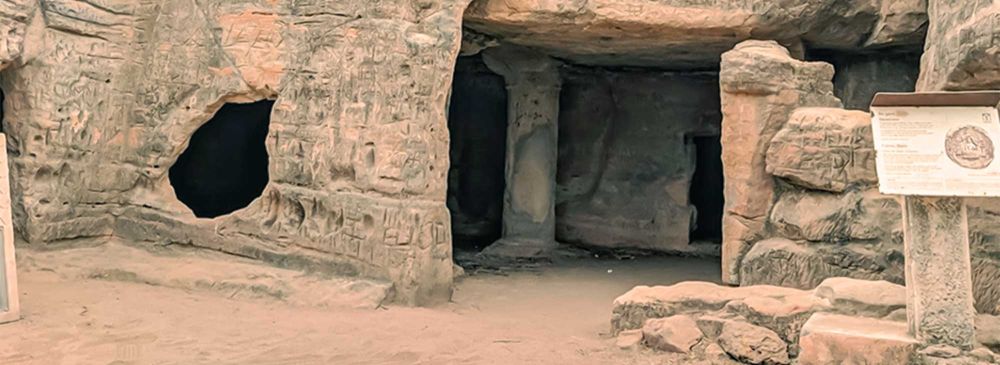

The Siyot Caves, also known as the Kateshwar Buddhist Caves, are located in the Kutch region of Gujarat, India. They are a significant archaeological site with a history that dates back to the first millennium AD. The caves hold importance not only for their historical value but also as an ancient center of Buddhist learning and spirituality.
The Siyot Caves have been mentioned in historical texts and are believed to have been part of the 80 monastic sites reported by the famous Chinese traveler Xuanzang (Huen Tsang) during his journey to India in the 7th century. While the exact date of their construction is not known, it is generally accepted that these caves were used by Buddhist monks for several centuries.
Tourism in Siyot Caves gained momentum in the 20th century with the growing interest in ancient civilizations and Buddhist heritage among both domestic and international tourists. Efforts to preserve and promote the caves as a tourist destination have led to an increase in visitors over the years. The archaeological significance of the site, clubbed with the mystique of ancient Buddhism in India, continues to attract history buffs, archaeologists, and cultural enthusiasts.
In recent times, there has been a noticeable shift towards sustainable and responsible tourism. Tourists are becoming more environmentally conscious, seeking experiences that are authentic and engaging while also minimizing their carbon footprint. The trend in the Kutch region, and at the Siyot Caves, is to promote eco-friendly travel options, cultural exchanges with the locals, and greater emphasis on preserving the historical sites.
The caves consist of a single-chambered cave with a defective dome, with an eastward facing façade suggesting a Buddhist chaitya, or assembly hall. Tourists are drawn to the ornamental façade and paintings that speak volumes of the artistic and spiritual endeavors of an era long gone. The local tourism authorities have worked to facilitate visitor access with improved amenities.
Travelers to Siyot Caves often combine their visit with other attractions in Kutch. The district is known for its vibrant culture, handicrafts, and the Rann of Kutch, which hosts the annual Rann Utsav—a cultural festival that showcases the region’s folk art, music, dance, and crafts.
It is important for visitors to respect the archaeological integrity of Siyot Caves and follow guidelines set forth by authorities to ensure the site is preserved for future generations. The blending of cultural heritage with responsible tourism is set to chart the future course of Siyot Caves as a prominent destination in India's tourism map.